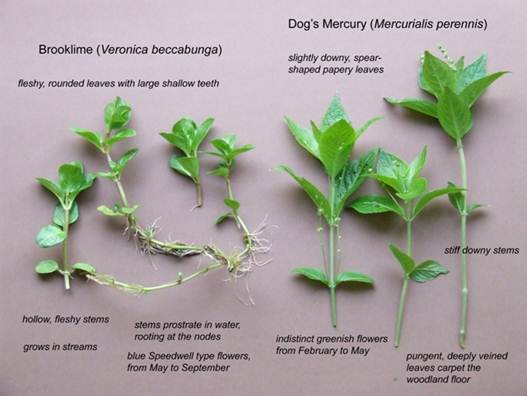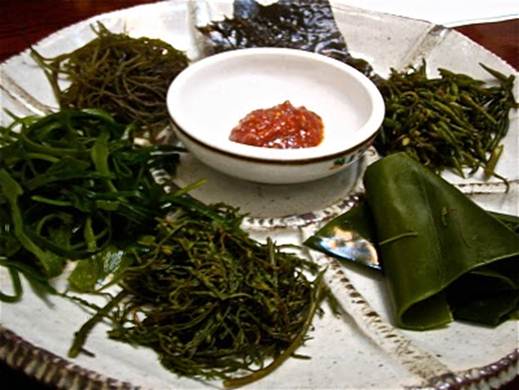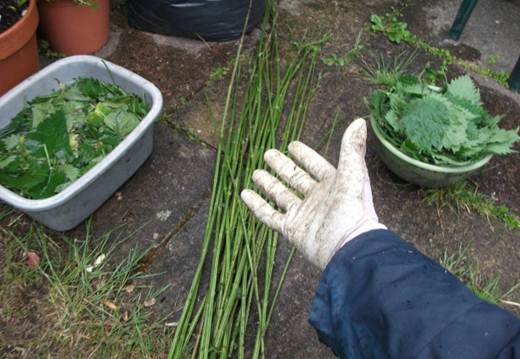A highbrow hobby
To understand these paradoxes, it’s
important to remember that ‘foraging’ (as understood today) doesn’t have much
connection with subsistence gathering. It has always been hobbyist and slightly
highbrow. One of the first accounts was Lilly Wiggs’s Esculent Plants, written
in the late 18th century. The author lived in Great Yarmouth and
worked in turn as a shoemaker, schoolmaster and bank clerk, marking out the
urban, artisan profile of the forager at an early stage.

In the 19th century, the fungus
foray was pioneered by Herefordshire’s Woolhope Naturalists’ Field Cluc, a band
of leisure-rich amateurs (including a high proportion of clergymen) at the
cutting edge of the Victorian interest in natural history and ruralism. Their
Proceedings for autumn 1869 describe a foray on which 35 of their members
ranged around the local countriside by carriage, collected a remarkable hoard
of edible mushrooms, and ended the dat ay the Green Dragon inn with a late
lunch of the day’s best trophies.
Later, reflecting the nostalgic mood of the
1930s, foraging found a natureral home in the English Folk Cookery Association,
and a voice in books such as Florence White’s Flowers as Food, published in
1934.
The foraging revival of the early 1970s,
when Food for Free appreared, has as much to do with the beginnings of concerns
about ecology and the quality of supermarket food as with the econnomic slump
(though students also used my book to eke out their grants). Similarly, when
fashionable chefs began using wild ingerdients, its was part of a wider
interest in exortic and ‘ethinic’ foods
The most recent resurgence coincides with
the economic downturn that began in 2008. But there hasn’t been a mass move to
wild garnering as a route to self-sufficiency. Throughout its history, fraging
has belonged as much in the head as in the field. It’s part of the romantic
dream of going back to the land that sustains us in difficult times.
Foodie Fads
The way in which our foraging habits have
always reflected fashion, social aspirations and the political mood is amply
demonstrated by the changing status of marsh samphire – my own first (and still
favourite) wilding. Traditionally, it was an arcane anf highly local nevelty
food, the ‘poor man’s asparagus’. Then in 1981 it was seved at Charles and Diana’s
wedding breealfast, picked fresh from the Crown’s own saltmarhes at
Sandringham.

this
sea vegetable has become a garnish for restaurant fish
In the new millennium, this sea vegetable
has become a garnish for restaurant fish, and a favourite seaside holiday
souvenir, sold by the bag to those who don’t want to get their own legs
mud-plastered. It has been harvested by local people and smaill-scale
commercial pickers for generations. But now some coastal landowners are
objecting. Marsh samphire is the first species to colonise bare mudflats, and
it help to stabilise vulnerable shorelines. Since it’s an annual, and the only
way to pick it is to yank out the whole plant (root and all), foraging destroys
it.
Yet there is no visible evidence that
picking marsh samphire is having ant impact on its abundance. In East anglia at
least, the ancient and much-loved tradition of samphire-gathering appears to be
pretty much sustainable.
Commercial overpicking ca be an issue –
particularly with wild mushrooms in areas such as the New Forest or Sussex oak
woods, which ate occasionlly pillaged by coachloads. Buts I’m not persuaded
that foraging per se poses any real conservation problems. For a start, it’s
still an activity in which a fairly small number of enthusiasts rootle anround
among common plants.

wild
foods
Almost all orthodox wild foods – leaves,
nuts, fruits and even mushrooms (since these are merely fruiting bodies, not
the fungus ‘root’ itself) – are a renewable resource. They are produced in
bounteous excess and naturally replaced. (It’s also important to keep
perspective here: the im pact of any kind of foraging on wild the destruction
wrought by modern agriculture.)
I suspect our real objection is to cutural
appropriation, not ecological despoliation. The wild is an commonwealth, and
we’re offened by any kind of privatisation by hedge-strippers, scrub-tramplers
and boorish looters who pcik more than they need. Maybe we need a kind of
foraging etiquette more than draconian new laws.